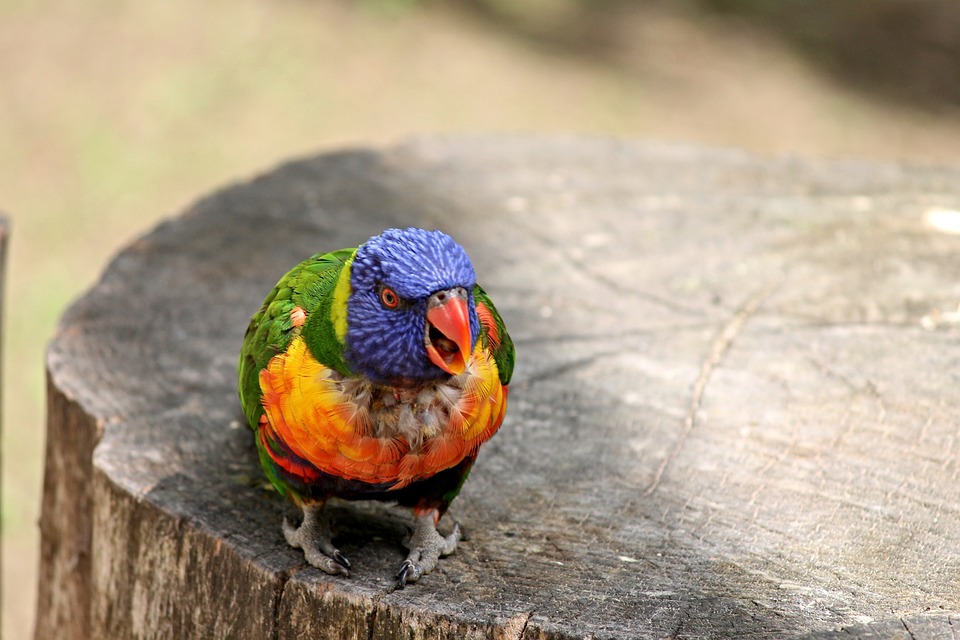Parrots are highly social creatures that thrive on companionship and interaction. As a responsible parrot owner, it is essential to encourage positive socialization between your feathered friend and different family members. Building strong bonds with each member of your household not only enhances your parrot’s well-being but also fosters a harmonious living environment. In this article, we will explore effective strategies to promote positive socialization and address common questions that arise in the process.
Understanding the Importance of Socialization
Socialization is crucial for parrots to develop trust, feel secure, and form meaningful relationships with family members. Regular socialization not only reduces stress and anxiety in parrots but also helps prevent behavioral issues such as aggression, feather plucking, and excessive screaming. By actively engaging your parrot with different family members, you encourage mental stimulation and emotional well-being.
Creating a Safe and Welcoming Environment
To facilitate positive socialization, it is important to create a safe and welcoming environment for your parrot. Provide a spacious and enriching living environment, including a variety of perches, toys, and hiding spots. Ensure the living area is free from potential hazards, such as toxic plants, open windows, or access to dangerous household items. Additionally, maintaining a consistent temperature, appropriate lighting, and proper ventilation will ensure your parrot’s physical comfort.
Introducing Family Members Slowly and Gradually
When introducing family members to your parrot, it is important to do so slowly and gradually. Start by introducing family members one at a time in a calm and controlled setting. Begin with short, supervised interactions to prevent overwhelming your parrot. Use positive reinforcement techniques, such as offering treats or praise, to associate family members with positive experiences.
Encouraging Positive Interactions and Bonding
To encourage positive interactions and bonding, involve family members in activities that promote interaction. This can include playing games, offering toys, or participating in training sessions. Additionally, encourage gentle physical contact, such as head scratches or gentle petting, if your parrot enjoys it. Allow your parrot to approach family members at their own pace, respecting their boundaries and preferences.
Establishing Consistent Routines and Rules
Consistency is key when it comes to socializing your parrot with different family members. Create a consistent daily routine that includes designated socialization time with each family member. Establish clear rules and boundaries for both your parrot and family members to ensure everyone’s safety and comfort. Encourage family members to adhere to the parrot’s established routines and avoid sudden disruptions or changes.
Addressing Behavioral Challenges
If you encounter persistent behavioral challenges during the socialization process, it is important to seek professional advice from an avian veterinarian or a reputable parrot behaviorist. They can help identify the underlying cause of the behavior and develop a behavior modification plan tailored to your parrot’s specific needs. Understand that not all parrots may have the same level of socialization needs, and some may require more time and patience to adapt to different family members.
Frequently Asked Questions (FAQs)
Q1: My parrot seems afraid of certain family members. How can I help them overcome this fear?
Start by allowing your parrot to observe the family member from a distance, gradually decreasing the distance over time. Use positive reinforcement, such as treats or praise, to reward your parrot for calm behavior during these interactions. Patience and consistency are key in helping your parrot overcome their fear.
Q2: Can my parrot develop a favorite family member?
Parrots often form stronger bonds with individuals who provide the most positive interactions, care, and attention. However, it’s crucial to promote healthy relationships with all family members to avoid jealousy or behavioral issues.
Q3: How long does it take for a parrot to socialize with different family members?
The socialization process varies for each parrot, depending on their past experiences, personality, and the efforts put into the process. It may take weeks or even months for a parrot to fully adapt and feel comfortable with all family members.
Q4: What should I do if my parrot shows signs of aggression towards family members?
Aggression in parrots can stem from fear, territorial instincts, or a desire to protect their bonded partner. Consult with a qualified parrot behaviorist to identify the underlying cause and develop a behavior modification plan tailored to your parrot’s specific needs.
In conclusion, promoting positive socialization with different family members is essential for the overall well-being of your parrot. By understanding their needs, creating a safe environment, and fostering healthy interactions, you can strengthen the bond between your feathered friend and your loved ones. Remember, patience, consistency, and respect for your parrot’s individual preferences are key to successful socialization.









